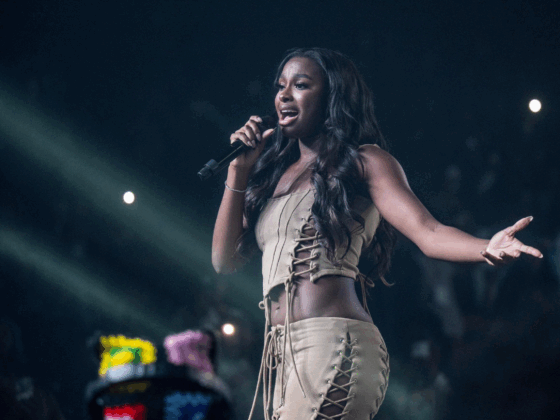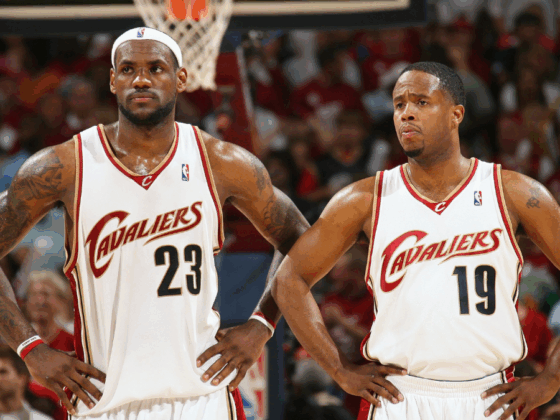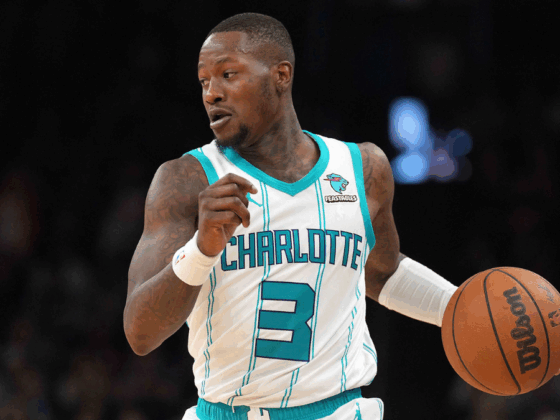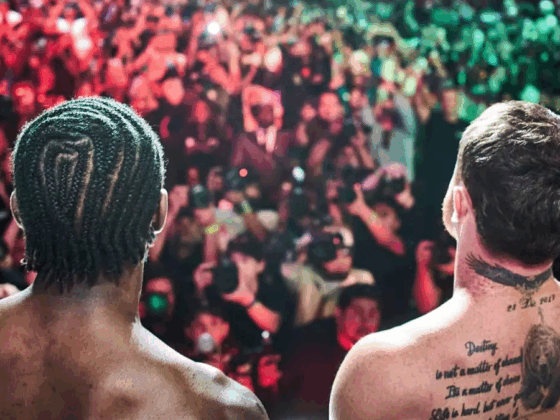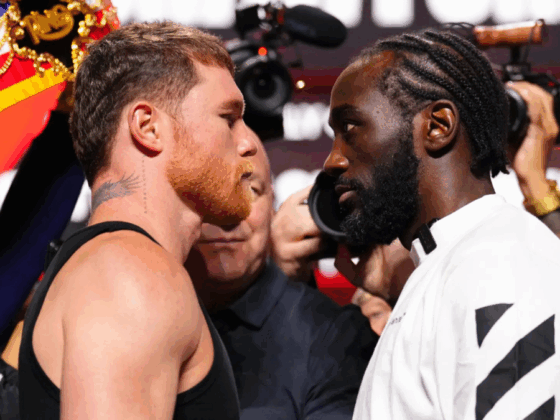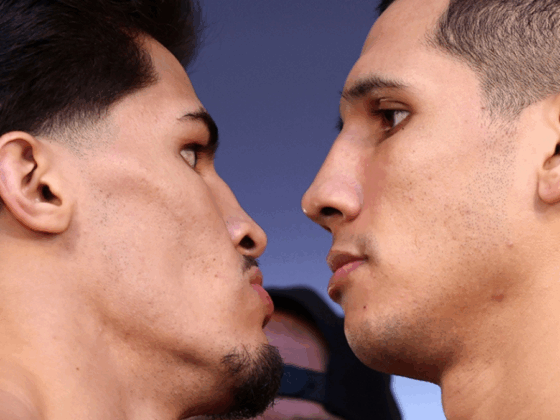
What’s the difference between a tweener and a versatile NBA player? Between lacking a true position and having the ability to play multiple positions? At the end of the day, it comes down to perception, effort and success, all three of which are tied together.
Negative perception spawns a chip on the shoulder, eliciting effort. Effort breeds success. Success alters perception. Versatility is the attribute craved above all else in today’s NBA, which is why the thin line between “tweener” and “versatile” is so amusing. The two terms are separated by a hair, yet one is coveted while the other is avoided like the plague.
Like so many other players, Georges Niang had that tweener label slapped onto him during the pre-draft process, following a decorated career at Iowa State University. It is almost certain that Niang will see his number retired at ISU one day; he led the school to four straight NCAA tournaments and is one of just four Cyclone basketball players ever to be named an All-American multiple times. In spite of that illustrious collegiate career, NBA prospects for Niang were slim when he declared for the draft in 2016. His weaknesses – a lack of jaw-dropping speed and athleticism, a slow release on his jump shot and questions about his position and defense – were picked apart in pre-draft analyses, overshadowing his many strengths and plummeting him to 50th overall in that draft.
A multifaceted combo forward standing at 6 feet 8.5 inches tall, capable of stretching the floor and making good passes, Niang’s profile reads like that of the small-ball bigs who are so desired in today’s NBA. His league-wide perception may have been jaundiced by the league’s marring experiences with players like Anthony Bennett, but Niang hasn’t allowed the tweener label to hamper him. After spending last year with the Salt Lake Stars and Utah Jazz as a two-way player, Niang made his way onto the team’s 2018-19 roster.
“It should be a fun year,” Niang told Def Pen Hoops. “I’m excited to be back in Utah and to make things happen.”
Niang has already altered his perception in the mind of the Jazz. Now, it’s time to prove himself to the rest of the league. He’s not just a late-second-round draft pick, but a legitimate NBA player who can do nearly everything on the basketball court. Niang has done his time. He was cut from the Indiana Pacers, the team that drafted him, and then picked up by the Golden State Warriors only to be waived less than two months later. He spent time in the G League with the Santa Cruz Warriors, and then on that aforementioned two-way contract. Now, his time is here.
Niang proved last season he was too good for the G League, and the Jazz took note (no pun intended), signing him to a three-year contract worth nearly $5 million. The first year of the deal is fully guaranteed, the first such season of Niang’s career.

After clawing his way out of the G League, Niang is ready to play for the Jazz full-time.
“It’s just exciting for me,” Niang said. “I was cut from the Pacers and then had to go from the ground up and really make things happen and sacrifice a bunch of different things to get back to where I wanted to be.”
One of those sacrifices Niang made has been his diet. In the offseason following his sophomore year at Iowa State, Niang began focusing on what was going into his body. By the time his junior season came around, Niang looked down at his scale and saw 230. His weight had peaked at 260 pounds the year before.
Fast forward four years, to today, and Niang says he’s at 225.
“They don’t pay fat people to play professional sports,” Niang joked.
This is a salient and indelible moment in Niang’s life. Signing for that first year of guaranteed money is no small milestone for a player. And yet, what he is most excited about for next season isn’t the money or the fame that comes with being a full-time professional basketball player.
“I’m just excited to be around the guys,” Niang explained. “I don’t think people realize how much fun we have together, whether if it’s practice, on the plane or really just competing against each other. I think we just have so much fun.”
One player Niang is especially looking forward to being around is Naz Mitrou-Long, his best friend, former college teammate and now current Jazz teammate. Mitrou-Long will be in Utah on the same two-way contract Niang had last season.
“When you have an opportunity to chase your dream alongside someone that you’ve talked about this with within college, and then him being your best friend, I think it’s amazing, and I think it’s something to be cherished, ’cause it doesn’t happen every day,” Niang said. “I’m blessed enough to be given the opportunity to play alongside my best friend, my college roommate. And I couldn’t tell you how excited I am to have another year with him.”
Filling an NBA roster spot is an incredibly rare and special achievement, one Niang is honored by after struggling to earn one for the past two years.
“Being there this year, [Utah] saw the hard work and dedication that I put into myself, my body, this game,” Niang said. “And I think the Jazz really value high-IQ basketball players that can play-make for others and do multiple things. And then, obviously, off the court, be a great member of the community and be a good person, I think that’s really what the Jazz stand for.”
Niang is still young but has already been able to make an impact off the court. On July 31, he hosted the third-annual Georges Niang Basketball Camp in Ames, Iowa, alongside former ISU basketball player and WNBA draftee Lyndsey Fennelly.
“It was a blast,” Niang said. “I had a ton of fun out here running a kid’s camp for the kids out in Ames. I’m real excited that it was another year and another success. And I think the biggest thing that’s even brighter is we raised $35,000 for mental health and the hospital in Ames, called Mary Greeley, toward their mental-health services on [July 30] with my charity golf outing.”
Niang is excited for the on-court stuff too. He says he thinks about his fit with the team and different players all the time. He’s already thinking about how he can help each individual player with whom he will share the court.
“I think the biggest thing for me to get out there is to focus on who I’m gonna be out there with and how I can help them out the most with my skill set,” Niang said.
That skill set is quite a diverse one. He’s always been talented in the post, as both a crafty scorer and an eagle-eyed passer. But there are plenty of guys who can go to work down low, and that isn’t what sets Niang apart. No, what stands out about Niang is that versatility. The era of one-trick ponies is over. It’s why Greg Monroe went from a starter averaging 16 and 10 to a backup bouncing from team to team on minimum contracts.
During his time at Iowa State, head coach Fred Hoiberg (now with the Chicago Bulls) refused to label Niang as any one position, telling Bleacher Report that “he wasn’t a 1, 2, 3, 4 or 5. He was an H.” The H stands for Hybrid, because Niang can do whatever is asked of him. He knows this basketball ambidexterity is his superpower.
“I’d describe myself as a versatile forward that can grab the ball off a defensive rebound, push the floor and outlet it to guys and make plays and really create for others in the open court,” Niang said. “And in the half-court set, really make different reads, whether it’s off pick-and-roll or setting pick-and-roll.
“I think the biggest attribute for me is that I’m smart, I can stretch the floor with my ability to shoot the ball and I can pass.”
IQ, shooting, passing, playing either side of the pick-and-roll. That’s a lot for one guy to do, but Niang is confident he can do whatever Jazz head coach Quin Snyder needs him to. One of Niang’s greatest strengths as a player lies in his playmaking ability.
He’s shown he can consistently make the right reads in just about any context. From the post, in transition or as an outlet passer, Niang can find his target every time down the court. He’s the prototypical point forward. His 4.1 assists per game last season led all G League forwards, with the exception of Terrence Jones, who played just 16 games, while Niang played 41.
If there’s another word used as frequently as “versatility” in today’s NBA, it’s “spacing.” Teams that can space the floor at four or five positions rule the league. It can be seen in the five-out lineups of the Warriors and Boston Celtics. Utah was a surprisingly solid 3-point-shooting team a season ago, ranking 12th in 3-point percentage and 13th in 3-point attempts. But with non-shooters like Derrick Favors and Rudy Gobert and limited shooters like Ricky Rubio and Royce O’Neal all playing significant minutes, the Jazz could use a bit more shooting, and that happens to be a strength of Niang’s.

He’s been a good shooter since his days at Iowa State; he shot 39.2 percent on 4.1 3-point attempts per game during his senior season. Those are good numbers. Last season in the G League, though, he shot so well that “good” would be an inadequate descriptor. Niang shot a scorching 45.9 percent on 4.8 attempts per game last season. How did he do it? How, in just two years, has he, on a deeper 3-point arc, upped his percentage by 6.7 points on more attempts?
It’s nighttime, and Niang has just wrapped up one of many Stars games in which he shot lights out from beyond the arc. Now, he’s exuberantly yelling into his phone.
“Punch it! Punch it! That’s all you gotta do!”
On the other end of this post-game FaceTime session is a hulking, red-bearded man named Joey Burton, a shooting coach christened “the Shot Doctor” by Sacramento Kings guard Yogi Ferrell. Burton did what he does best for Niang: He helped him rework his shot.

Burton explained his shooting philosophy, and the genesis of that “punch it!” phrase, with an analogy. Imagine you’re in a boxing ring, fighting an opponent.
“When you punch something or someone,” Burton says, “You’re not going to be able to totally take your whole arm further back, because now that exposes you for another punch, right? So you would have to keep your hand by your face (for protection), but how do you get power on your punch? You would really extend your elbow more violently, and you would get the power from your elbow.”*
The hardwood and the boxing ring aren’t so different, it turns out. Burton shared his punching analogy with Niang, and told him: “Instead of punching forward, you’re essentially punching up. Like, you’re doing a punching motion up. And he really grasped that.”
(*Note: Burton is an expert when it comes to basketball more than boxing; Detroit Pistons writer and resident boxing expert Sham Mohile has informed me that most of the power in a punch comes from the hips and the core. Just ignore that for the sake of the analogy, though)
Good college shooting doesn’t always translate to the NBA. The arc is deeper. NBA defenders are generally better, longer and quicker to close out. Luckily, Niang was drafted by the Pacers, and Burton is based in Indiana. The two were introduced by then-Pacers forward Glenn Robinson III, who was coming off of a spectacular Summer League showing and recommended Burton’s services to Niang.
Despite Niang’s already-serviceable shot (37.5 percent from 3 for his collegiate career), Burton wanted to start from scratch.
“A lot of guys in my position are somewhat hesitant to try and get an NBA player to change something that, at 37 percent in college, isn’t necessarily broken or doesn’t really need a lot of fixing,” Burton told Def Pen Hoops. “But one of the knocks on Georges was that he had a slow release, so we did some things to really try and speed that release up.
“He was flinging the ball back, and his shooting motion was more of a flinging to the rim, rather than a pushing to the rim. And so, we started to make some changes.”
Niang has never jumped much on his shot, which is a problem if you give credence to the common shooting aphorism that claims the legs are the most important aspect of a jump shot. The Shot Doctor disagrees. In fact, he called the accentuation on legs “one of the biggest myths of shooting” and noted a majority of the best shooters – he pointed to Larry Bird, Stephen Curry, Klay Thompson, Steve Nash and Dirk Nowitzki as examples – don’t jump much when they shoot.
Burton believes Niang’s flinging shooting motion was born from a timidity about the NBA’s deeper arc. Niang didn’t think he could “push” the ball all the way to the rim the way Burton wanted him to, without putting more legs on his shot. He was falling for the myth.
“Really, what generates a lot of power,” Burton said, “[is] pushing with your elbow. So I never tried to change his jump, or really the way he got ready for his shot, even. It was more about the speed of getting the ball to the shooting pocket and then really pushing it up with his elbow.”
There’s one more person whom Niang accredits for fine-tuning his jump shot. If Burton ameliorated the upper-body part of Niang’s jump shot, trainer Noah LaRoche helped to improve the lower half.
“Noah LaRoche has really focused me on my feet, and where I’m landing and different things like that.”
LaRoche expanded on what the two have worked on in regards to Niang’s jump shot.
“Just having a little better balance on his catch and then on his landing,” he said.
During his sophomore year at Iowa State, Niang fractured his right foot. Any time an athlete suffers an injury that forces them to favor one side of their body over the other, that can affect said player’s balance, even once they’re fully healed.
LaRoche says he worked with Niang on recognizing the lasting effects of the injury, as well as recovering his balance and weight distribution. LaRoche is based in New Hampshire, the same state in which Niang played his high-school ball. The two have been working together on a frequent basis since Niang was a sophomore in high school.
“We’ve invested full summers together, we’ve invested months at a time together,” LaRoche said. “Last year I had him probably, eight, 10 weeks total throughout the three or four months he had off. The year before, I had him for pre-draft and after Summer League. Yeah, we’ve spent a lot of time together through the years.”
A common theme emerged from the words of LaRoche and Burton: Georges Niang is a workhorse.
“Georges works hard at what he does, that’s why he’s so good,” LaRoche said. “That’s why he’s always risen above expectations — high school, college and now playing in the NBA.
“He’s a guy who loves basketball, who works really hard to get better. I think those two things — loving the game and working hard — have led to his improvement.”
Burton, too, lauded Niang’s tireless work ethic, explaining why he believes Niang’s outstanding shooting in the G League will carry over to the NBA. “I think he can maintain it, and the reason why is he’s a tireless worker,” Burton said. “I think that if you combine correct mechanics with a tireless work ethic, the ceiling is high for you as a shooter.”
Niang is off to a slow start as a 3-point shooter in the NBA (he’s 1 for 16 from deep in the 125 minutes he’s played) but is determined to prove his trainers’ faith in his shot is warranted.
“Obviously, that’s something that I have to continue to prove, and I’m willing to continue to do that and prove to people that I am a shooter,” Niang said. “I’m not going to sit here and tell you, ‘oh, well this didn’t happen, and then this, and that’s why I’m shooting it like that.’ I mean, 1 for 16, numbers don’t lie. It is what it is.”
Numbers indeed do not lie, but that’s why the 229 3-pointers he’s attempted in the G League should be weighed much more heavily than the 16 shots he’s taken in the NBA, especially because of who we’re talking about here: a guy who continually works his tail off.
“One thing I’ve learned about Georges is, I wouldn’t put anything past him because of his work ethic,” Burton said.
With about a month to go until training camp, Niang is working with LaRoche.
“Moving off the ball, finding passing windows, cutting at appropriate times and then making plays for others,” LaRoche said of Niang’s areas of emphasis this offseason.
LaRoche added that he’s working with Niang on making “the appropriate read on closeouts,” which is an important skill for a player, especially one who is a 3-point threat, to possess.
“I guess the overall theme would be working on quickening his mind, which is already pretty quick,” LaRoche explained, adding that the focus is “quickening his mind in terms of his decision-making and seeing things before they happen.”
Niang’s opportunity is here. He has the chance to prove himself. He won’t start out with a major role in Utah, but if there’s one team known for rewarding players who impress in their roles, it’s the Jazz. It happened with Joe Ingles in 2014-15 and then again with Royce O’Neal last season.
Niang has his sights set high for this season with the Jazz.
“When you come into every season, you want to win a championship, I mean I think that should be our main goal,” Niang said.
Of course, any team aiming for a championship will eventually have to go through the ultimate roadblock – the Golden State Warriors, winners of three of the last four NBA championships. Niang isn’t buying the Warriors’ invincibility.
“I don’t think you can (believe they’re invincible) when you’re competing against them like that. You can’t fall into that trap,” Niang said.
Will Niang be this season’s hidden gem in Salt Lake City? Crazier things have happened than a sweet-shooting, playmaking, versatile gym rat outperforming expectations and earning a significant role on a playoff team.
